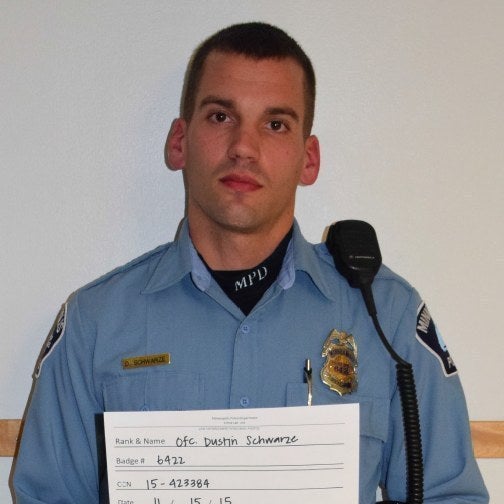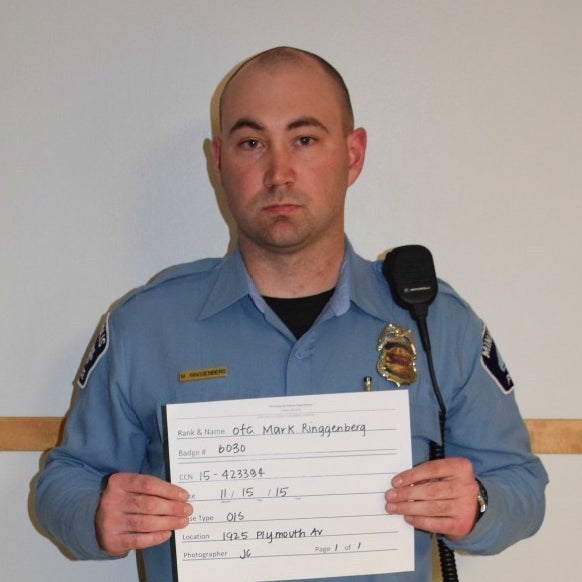
The night of November 15, 2015, was unseasonably warm in Minneapolis. A group of friends gathered at a modest apartment building on the city’s north side to throw a birthday party. Among those in attendance were RayAnn Hayes, 41, and her 24-year-old boyfriend, Jamar Clark.
By the following morning, a police officer had shot Clark in the head while another pinned him to the ground. By the following week, activists had occupied the local police station in protest, their anger fueled by the perception that Clark had been shot while handcuffed.
And within a month, four people were charged for shooting at protesters, and the Twin Cities seemed on the verge of becoming the latest American metropolis to burn after yet another police shooting of an unarmed black man. Attention once again turned to a local prosecutor to determine the fate of the officers.
On Wednesday, Michael Freeman, the Hennepin County Attorney, said he would not bring criminal charges against the two officers. In an unorthodox move, Freeman did not bring the case before a grand jury, but decided to make the call himself.

And in another unusual move, Freeman released a trove of documents and videos detailing his investigation into Clark’s death. Although some activists have disputed aspects of Freeman’s version of the story, the prosecutor’s narrative of the case remains the most complete account yet of the events that led to the shooting. (All statements of fact in this article are drawn from the prosecutor’s words or documents released by his office.)
The first of those events, according to a 24-page report, was an argument between Nekelia Sharp, the birthday party’s guest of honor, and her husband. Hayes tried to intervene, but Clark “grabbed her.” The couple, both of whom were drinking, got into a physical fight and hurt each other.
Hayes called 911 and requested an ambulance. Minutes later, two paramedics responded and tried to carry her to an ambulance. When they walked out of the building, they passed Clark who, according to one of the paramedics, was “acting kind of odd.”
“That’s the guy who did this to me,” Hayes said to the paramedics.
View this video on YouTube
EMS bring Hayes into the ambulance. Clark can be seen in the left corner.
The paramedics called the police “because the apparent assailant was on the scene.” Clark walked to the ambulance and told paramedics he was his girlfriend’s son, which Hayes denied. Clark then became angry, calling one of the paramedics a “pussy.” He also allegedly told Hayes that he would “come see her.”
The paramedics loaded Hayes into the back of the ambulance and locked themselves in with her, which meant they could not move to the front of the ambulance to drive her to the hospital. Clark stayed behind the ambulance for several minutes, knocking on the glass and attempting to get in.
View this video on YouTube
Clark can be seen standing behind the ambulance.
Meanwhile, Michael Trullinger, the deputy chief of the city’s emergency medical services, arrived. He told investigators that Clark “was crying” and “alternated between throwing his hands up in the air and putting them in his pockets.”
Around that time, shortly before 1 a.m., Minneapolis Police Department officers Dustin Schwarze and Mark Ringgenberg arrived.
The officers approached Clark and asked him to take his hands out of his pockets, the report states. Ringgenberg, who had been with the MPD for 13 months after transferring from the San Diego Police Department, took out his gun and pointed it to the ground.


“What’s the pistol for?” Clark asked.
The cops again asked Clark to show his hands — he didn’t. Ringgenberg put his gun back in its holster. The two officers grabbed each of Clark’s hands and tried to handcuff him, and he resisted.
Whether the cops were able to put handcuffs on Clark at that point is a matter of contention. Freeman said that there were conflicting eyewitness accounts, but insisted that all the physical and forensic evidence — Clark’s DNA wasn’t found on the inside of the cuffs, for example — suggested that Clark wasn’t restrained.
View this video on YouTube
The two officers can be seen approaching Clark, tackling him, and struggling with him.
Ringgenberg then “reached his arm around Clark’s neck and took him to the ground.” Less than 15 seconds passed between the officers’ first verbal command and their tackling Clark.
“Ringgenberg had been trained in his prior work as a police officer in San Diego to take a suspect to the ground when he or she resisted being handcuffed because it was believed to be safer,” Freeman said.
Ringgenberg fell on top of Clark and tried to handcuff him. Then, the officer “felt his gun go from his right hip to the small of his back.”
“He’s got my gun!” Ringgenberg told his partner.
Schwarze then put his gun to the edge of Clark’s mouth.
“Let go or I’m going to shoot you,” Schwarze said.
“I’m ready to die,” Clark replied. (Activists dispute Clark said that, noting that the only reports of those statements come from the police officers involved).
Schwarze tried to fire, but his gun jammed.
“Shoot him!” Ringgenberg yelled.
Schwarze pulled the trigger again. This time, the gun fired. Cell phone video taken by a bystander shows that the scene turned to chaos, with people screaming.
View this video on YouTube
The immediate aftermath of Clark's shooting.
More police officers arrived and took Schwarze and Ringgenberg to the local station, four blocks away. An ambulance took Clarkto a local hospital, where he died less than 24 hours later.
An official autopsy found that Clark died from a single point-blank gunshot that entered his skull near the left eye, and that he had alcohol and marijuana in his system. The coroner did not find and bruises on his wrists that would suggest he’d been handcuffed shortly before his death. Forensic analysis later found Clark’s DNA on Ringgenberg’s gun handle.
View this video on YouTube
EMS bring Clark into the ambulance.
Freeman said his office had concluded that “the evidence does not support the filing of criminal charges” against the officers. He noted that the legal standard for charging an on-duty police officer with homicide or manslaughter is very high, requiring the state to consider the case not from the perspective of a civilian with 20-2o hindsight, but of a “reasonable police officer” in the heat of the moment.
“Ringgenberg reasonably believed that if Clark had succeeded in removing his firearm from his holster, Clark would have shot both officers,” Freeman said.
Towards the end of Freeman's news conference on Wednesday, several members of the public began confronting the prosecutor. One of them asked why the two officers had been allowed to sit in a car together for several minutes before they were separated. Another asked warned the prosecutor that his decision could incite violence.
“If the city burns,” a woman could be heard saying, “it’s on your hands.”
As the questions became more and more aggressive, Freeman thanked everyone for coming and abruptly left.





